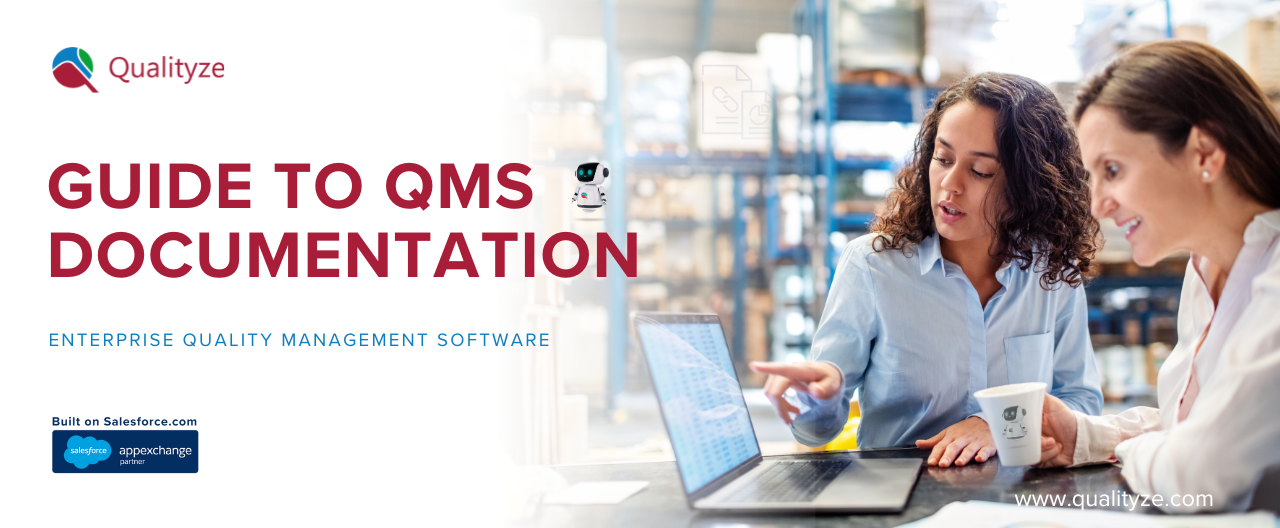Calculate your potential savings with our ROI Calculator
ROI CalculatorCalculate your potential savings with our ROI Calculator
ROI Calculator1 What is QMS Documentation?
2 ISO 9001 QMS Documentation Requirements
3 ISO 9001 Quality Management System (QMS) Documentation Structure
4 Role of QMS Software in Managing Quality Documentation
5 Best Practices for QMS Documentation
6 QMS Documentation Hierarchy
7 Steps to Ensure Effective QMS Documentation
8 Purpose of QMS Documentation
QMS Documentation Example
10 Parting Shot:

Have you ever wondered how companies consistently deliver high-quality products and services? The secret lies in the Quality Management System (QMS). QMS system outlines a structured approach to ensure consistent quality across all operations. A crucial cog in the machine is QMS documentation. Quality Management System (QMS) documentation is crucial for organizations aiming to maintain consistency and efficiency in their operations while ensuring customer satisfaction and regulatory compliance.
This comprehensive guide walks you through everything you need to know about QMS documentation, from its definition to best practices and examples.
Think of QMS documentation as the rulebook for your quality management system. It's a collection of documents and records that define how your company achieves quality. These documents outline processes, procedures, and responsibilities for every step involved in creating your product or service.
Having clear and concise documentation ensures everyone in the company understands their role in maintaining quality. It also serves as evidence that your company follows established quality standards.
QMS documentation refers to the set of documents, policies, procedures, and records that define and regulate an organization's approach to quality management. It serves as a blueprint for executing, monitoring, and improving processes to meet customer requirements and enhance organizational effectiveness.
ISO 9001, the international standard for QMS, outlines specific requirements for documentation to ensure organizations consistently deliver products and services that meet customer expectations. These requirements include documented procedures for key processes, records to demonstrate conformity to requirements, and a quality manual outlining the scope of the QMS.
ISO 9001 is the most widely recognized international standard for quality management systems. Although it doesn't prescribe specific document formats, it does outline the requirements for a documented QMS. These requirements ensure that your documentation covers essential aspects for achieving quality.
The structure of ISO 9001 QMS documentation typically includes:
QMS documentation structure is hierarchical. There is no one-size-fits-all approach to it, which means documents are organized based on importance and level of detail.
Managing paper-based QMS documentation is cumbersome and prone to errors. Thankfully, QMS software offers a centralized platform for electronically creating, storing, and managing all your quality documents. This streamlines document control, revision history tracking, and accessibility for all employees.
QMS software is pivotal in managing QMS documentation by centralizing document control, ensuring version control, and facilitating collaboration across departments. It automates document workflows, tracks changes, and enhances accessibility while maintaining document security and compliance.
Related Article : Importance of Documentation in Quality Management
To create effective QMS documentation, consider these best practices:
QMS documentation follows a hierarchical structure that includes the following:
Each level provides increasingly detailed information on how processes are managed and monitored within the QMS.
Achieving effective QMS documentation involves several steps:
The primary purposes of QMS documentation include:
An example of QMS documentation might include:
Related Article: What are the different methods of Document Version Control
By following the QMS guidelines and understanding the importance of QMS documentation, companies can establish a strong foundation for achieving consistent quality, meeting customer requirements, and ultimately driving business success.
Here are some additional points to consider:
QMS documentation is essential for organizations striving to enhance quality, achieve regulatory compliance, and improve customer satisfaction. Organizations can establish and maintain an effective QMS that drives continual improvement and business success by understanding its components, requirements, and best practices.